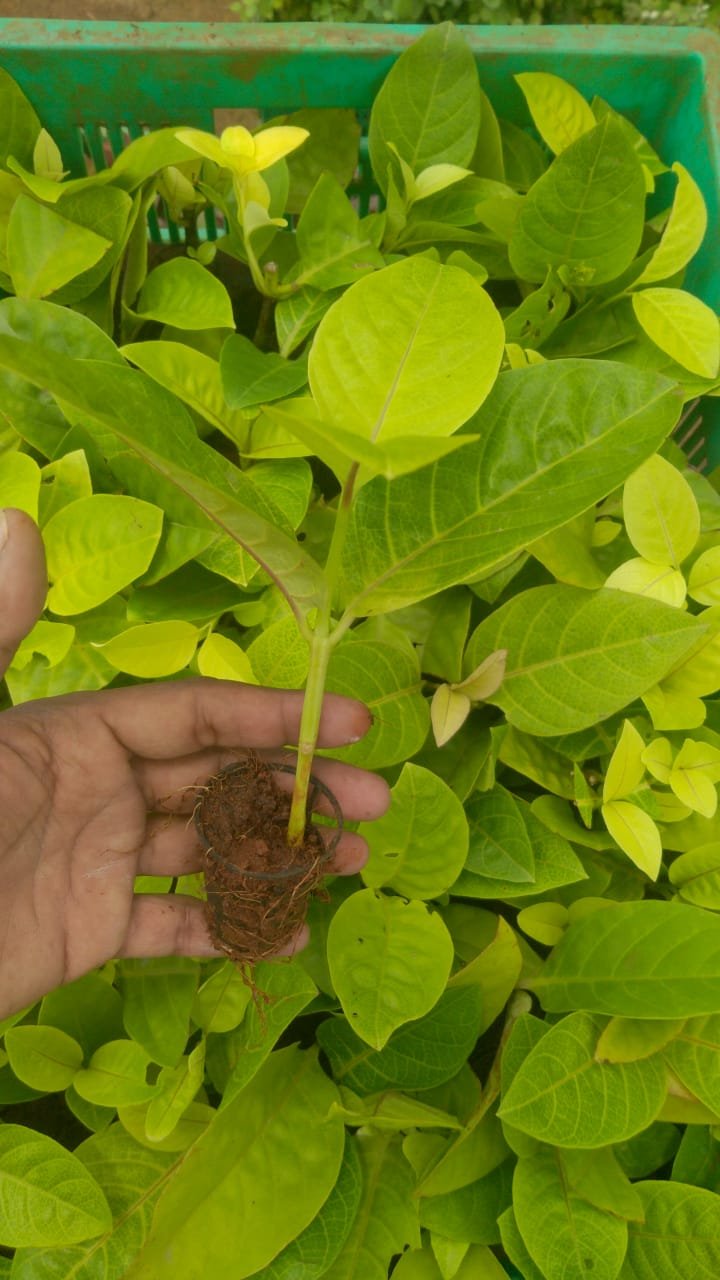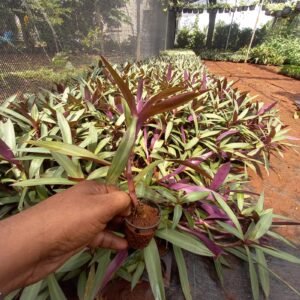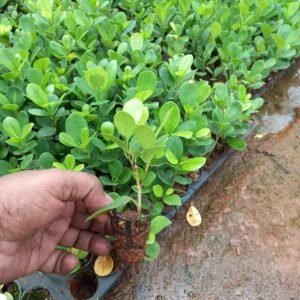Ananta, commonly known as Gardenia (Gardenia jasminoides), is a cherished outdoor plant renowned for its exquisite fragrance and beautiful, creamy white flowers. Native to the tropical and subtropical regions of Africa, Asia, and the Pacific Islands, this evergreen shrub is a favorite in gardens and landscapes for its ornamental appeal and sweet scent.
Appearance and Unique Features
The Gardenia plant is characterized by its glossy, dark green leaves that provide a lush backdrop for its stunning blooms. The flowers are large, typically 2 to 5 inches in diameter, and have a waxy texture, resembling roses or camellias. They bloom in spring and summer, filling the air with their captivating fragrance, which can be particularly enchanting in the evening.
Gardenias can grow anywhere from 3 to 6 feet tall, making them versatile enough to be used as standalone specimen plants, in borders, or as part of mixed garden beds. Their dense foliage also makes them suitable for hedging or screening.
Care and Maintenance
Caring for Ananta is relatively straightforward, though it does have specific needs to thrive. Here are some essential care tips:
- Light: Gardenias prefer bright, indirect sunlight. They can tolerate some direct morning sun but should be protected from harsh afternoon rays, which can scorch their leaves.
- Watering: These plants like consistently moist soil but should never be waterlogged. Water regularly, allowing the top inch of soil to dry out between waterings. During hot weather, more frequent watering may be necessary.
- Soil: Gardenias thrive in well-draining, acidic soil. A potting mix designed for acid-loving plants is ideal. If planting in the ground, consider amending the soil with organic matter to improve drainage and acidity.
- Fertilizing: Regular feeding with an acidic fertilizer during the growing season can promote healthy growth and abundant blooms. Fertilizing every 4 to 6 weeks is usually recommended.
Landscaping Uses
The Ananta plant is highly versatile in landscaping:
- Specimen Plant: Its stunning blooms and fragrant foliage make it a striking focal point in any garden.
- Hedges and Borders: Gardenias can be planted in rows to create attractive hedges, providing both beauty and privacy.
- Container Gardening: They do well in pots, allowing you to place them on patios, decks, or near entryways for an added touch of fragrance and beauty.
Pest and Disease Management
While generally resilient, Gardenias can be susceptible to pests such as aphids, whiteflies, and spider mites. Regular monitoring and maintaining good air circulation can help prevent infestations. If pests are detected, organic solutions like insecticidal soap or neem oil can be effective in managing them.
Additionally, Gardenias are prone to certain diseases, such as root rot if overwatered or fungal issues in overly humid conditions. Ensuring proper drainage and spacing can help mitigate these risks.






Reviews
There are no reviews yet.